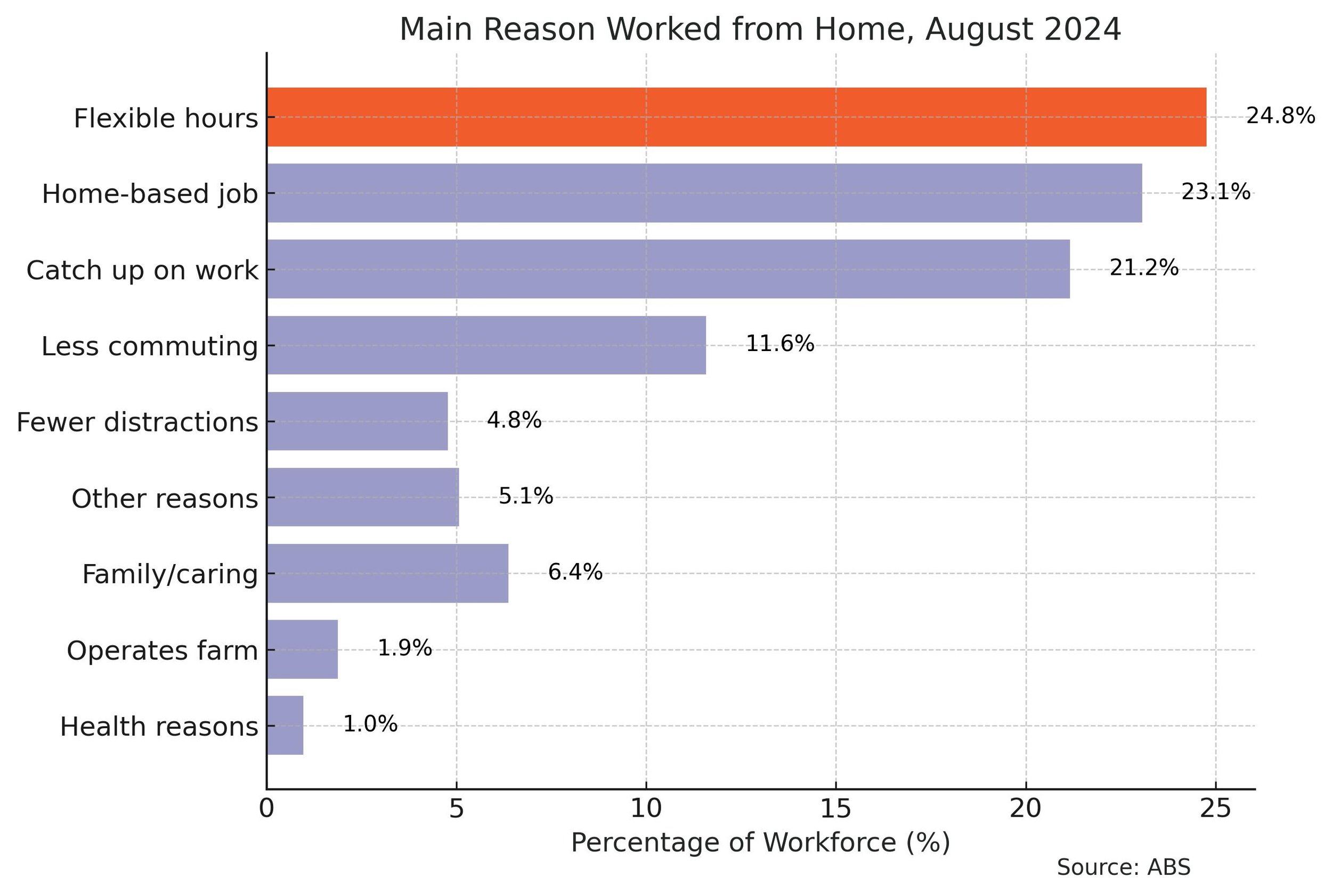The Work-from-Home Showdown: What Employers Need to Know in 2025
The debate over working from home is back in the spotlight. In January 2025, President Trump issued an executive order mandating a full-time return to the office for federal employees. This month, the Opposition Party announced similar plans, vowing to enforce in-office work for public servants if they win the next election.
Yet, despite these political shifts, remote work remains deeply embedded in workplace culture. According to the Australian Bureau of Statistics (ABS), 36% of Australians were still working from home in August 2024, proving that flexibility is not just a pandemic-era experiment—it’s now an expectation.
Employees choose to work from home for a variety of reasons. The most common drivers include flexibility, home-based jobs, and the ability to catch up on work after hours. According to ABS data, nearly 25% of Australians working remotely do so to have more control over their hours, while 23% operate a business from home or hold a home-based job. Many also see reduced commuting time, fewer distractions, and family or health considerations as key benefits.
Main reason worked from home, August 2024
With employee expectations around remote work evolving, businesses must assess how they balance these preferences with operational and compliance requirements.
WHS Laws: The Home as a Workplace
Under Work Health and Safety (WHS) laws, employers remain responsible for a workers’ health and safety even when they work from home. The home becomes the workplace, meaning businesses must consider what steps are required to manage risks and obligations.
What practical measures does your business have in place to meet these responsibilities?
Workers' Compensation: Who is Liable for Injuries at Home?
The recent South Australian case involves a council employee who, while working from home, tripped over a 60-centimeter pet fence during a coffee break. The South Australian Employment Tribunal ruled that her injuries were compensable under workers' compensation laws, as the incident occurred during an authorised break within her home workspace.
Would your business be prepared if a work-from-home injury claim was made?
Flexible Work Requests & Employment Law Compliance
Under Australian employment laws, eligible employees have the right to request flexible work arrangements, including remote work. The Fair Work Commission now has the authority to intervene in disputes over these requests.
Does your business fully understand the legal obligations around work-from-home requests and refusals?
Policies: Setting Clear Expectations
If your business allows remote work, a strong work-from-home policy is essential. Without clear guidelines, businesses risk inconsistent practices, compliance breaches, and employee disputes.
Does your business have a work-from-home policy that effectively manages legal and operational risks?
Free Webinar: Work-from-Home- Balancing Flexibility, Compliance & Business Needs
The push and pull between employees wanting flexibility and businesses expecting a return to the office presents real challenges for employers. While businesses must manage operational needs, they also need to comply with employment law, WHS obligations, and workers' compensation risks.
Join Amy Towers, Principal Consultant WHS, and Allie Terrill, Principal Consultant Employment Relations, for a free 45-minute webinar on Wednesday, 26th March, 10 AM AEST / 11 AM AEDT.
This session will take a practical, no-nonsense approach to help businesses navigate the key risks and requirements.
We’ll cover:
✔ Your WHS duty of care—what’s required when an employee’s home is their workplace
✔ Workers’ compensation risks—how recent cases are shaping employer liability
✔ Flexible work and Fair Work compliance—what requests must be considered and when they can be refused
✔ Work-from-home policies that work—what should be included to support compliance and consistency
✔ Managing remote work hours—tracking, performance, and avoiding legal pitfalls
This webinar is designed for business leaders who want clear, practical guidance—not just theory.


